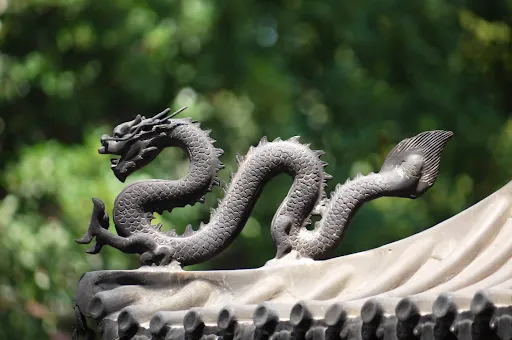Once, the mighty dragon reigned supreme in the skies, its mystical presence whispered through the rustle of ancient trees and reflected in the awe-filled eyes of people. Today, these majestic creatures from a long-forgotten era continue to hold sway over the human imagination, albeit symbolically. Among the myriad ways we celebrate their legacy, dragon rings occupy a special place, encapsulating the powerful symbolism of these mythical creatures in the fine intricacy of jewelry. These age-old adornments trace their roots back to ancient cultures, where they held potent meanings that reverberate even today.
An emblem of power, wisdom, and protection, dragon rings serve as enduring reminders of our fascination with the myth and lore that surround these legendary beasts. The journey of these ornate trinkets transcends cultures and continents, weaving an enchanting tale of history, folklore, and craftsmanship. Let’s revisit the compelling saga of dragon rings across different civilizations and eras, unraveling the many dimensions they epitomize.
Table of Contents
Dragon Rings in Ancient China
In the ancient civilization of China, the dragon was more than a mythical beast; it was a divine symbol of imperial power, a harbinger of prosperity, and an icon of good fortune. Reflecting these beliefs, the art and artifacts from this period often showcased dragon motifs. Among these, dragon rings held a special place.
Specifically, during the Ming (1368-1644) and Qing (1644-1912) dynasties, dragon rings crafted from gold, jade, or silver were not merely ornaments but potent symbols of authority and luck. A 2018 report by China’s State Administration of Cultural Heritage revealed the recovery of a Qing-era gold dragon ring, underscoring the dragon’s influence in Chinese artistry and craftsmanship. Such rings were typically elaborate, featuring serpentine dragons amid clouds or waves, symbolic of their association with the elements of water and air.
Dragon Rings of the Viking Era
Across the continents, in the cold lands of the Norse, the dragon had a different avatar. Viewed as fearsome and destructive creatures, dragons in Norse mythology were often associated with chaos and calamity. Despite the dragon’s ominous image, it was frequently featured in Viking jewelry, particularly in rings.
A 2019 study published in the Journal of Archaeological Science hints that Viking dragon rings were likely seen as protective talismans, warding off evil spirits. These rings typically displayed intricate craftsmanship, with the dragon’s head and tail often forming the open ends of the ring. The elaborate knotwork on Viking dragon rings was not only a testament to their craftsmanship but also a reflection of the complex belief systems of this formidable civilization.
Dragon Rings in Medieval Europe
Moving into the Middle Ages in Europe, dragons became the embodiment of greed and chaos. The dragon, as the guardian of immense treasure hoards, was a recurring motif in European art and literature. In contrast, dragon rings from this period held a somewhat paradoxical significance.
Medieval dragon rings, according to records from the British Museum, were often associated with healing and protection. Rings featuring coiled dragons or dragon biting its tail were believed to possess curative properties, providing protection and curing illnesses, particularly those thought to be caused by “evil spirits.” These rings, blending symbolism and superstition, offered a unique perspective on the societal and spiritual beliefs prevalent during the Middle Ages.
Dragon Rings in Modern Pop Culture
Fast-forward to modern times, and dragon rings continue to captivate the popular imagination, thanks to their increasing prominence in media and pop culture. From the elven rings of J.R.R. Tolkien’s Middle-earth series, to the popular HBO series Game of Thrones where dragon motifs played significant roles, dragon rings have become popular symbols in fantasy literature and media, embodying power, magic, and intrigue.
In light of these varied cultural narratives, dragon rings remain a fascinating exploration of our collective psyche, embodying our fears, aspirations, and the innate human attraction to the mystical and the unknown. They connect us to the past, acting as windows to ancient cultures and their intricate belief systems.
We have traced the incredible saga of dragon rings across civilizations and epochs, witnessing their evolution and enduring cultural significance. While they were forged in the furnace of our collective mythology, these ornate trinkets continue to hold relevance today, an unbroken thread linking us to our mythical past.
To further expand your knowledge in this domain, you may want to explore the role of dragons in literature, dive into the broader realm of dragon symbolism in different cultures, or examine the evolution of dragon iconography in visual arts. Each of these topics offers a fresh perspective on how the human fascination with dragons continues to manifest in our contemporary world.





